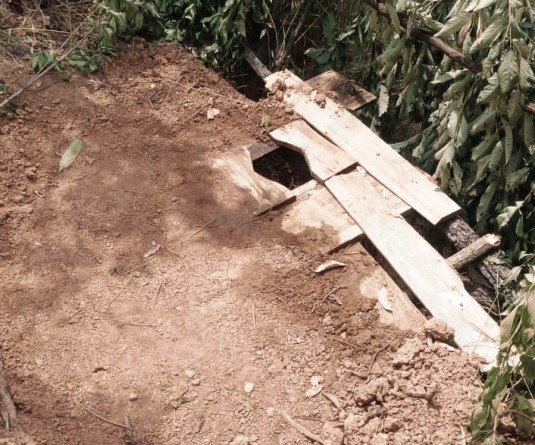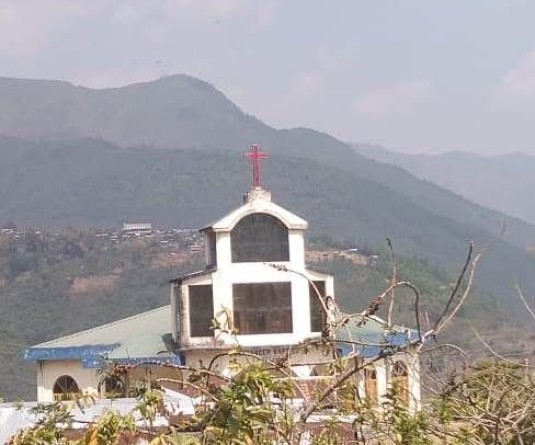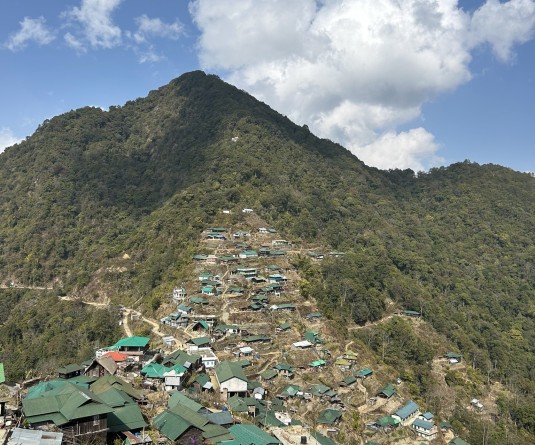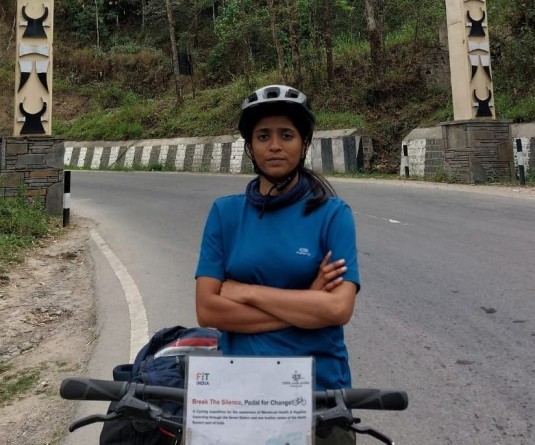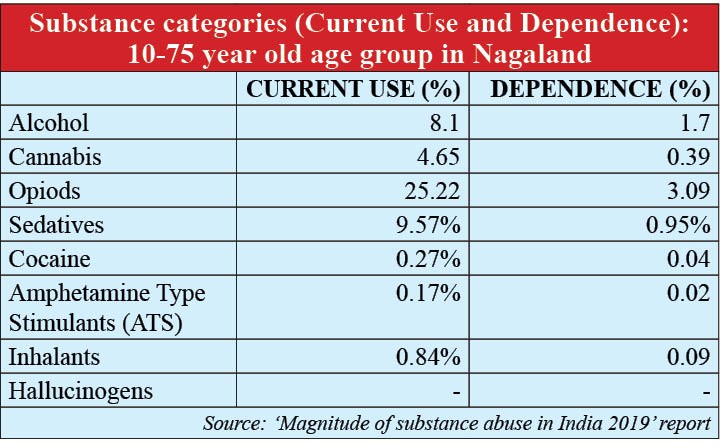
June 26 is International Day Against Drug Abuse and Illicit Trafficking
Atono Tsükrü
Kohima | June 25
Nagaland is featured among the top ten states in the country with the highest prevalence of opioid users and People Who Inject Drugs (PWID), in a list which includes Uttar Pradesh, Punjab, Delhi, Andhra Pradesh, Telangana, Haryana, Karnataka, Maharashtra and Manipur.
A report compiled and published by the National Drug Dependence Treatment Centre (NDDTC), All India Institute of Medical Sciences (AIIMS), New Delhi, shows that Sikkim, Arunachal Pradesh, Nagaland, Manipur and Mizoram have the highest prevalence of opioid use in the general population (more than 10%).
States with the highest prevalence of current sedative use are Sikkim (8.6%), Nagaland (5.4%), Manipur (4.3%) and Mizoram (3.8%), and Nagaland is listed in the second on the use of charas/ganja with 4.7% after Sikkim with 7.3%.
The report titled ‘Magnitude of substance abuse in India 2019’ from the project National Survey on Extent and Pattern of Substance Use in India was commissioned and funded by Ministry of Social Justice and Empowerment, Government of India.
Govt inaction
Despite this alarming data, the Nagaland State Substance Abuse Prevention and Treatment Policy is yet to see the light of day, though it received the Cabinet’s approval on June 26, 2016.
Speaking to this reporter on the eve of the ‘International day against drug abuse and illicit trafficking’, Abou Mere, Director, Kripa Foundation said, the Nagaland State Substance abuse Prevention and Treatment Policy was conceptualized to address drug and alcohol problem as a public health and human right, with a political leadership and commitment cutting across party lines and civil societies collectively to address the problem of substance abuse in the state.
Stating that substance use and abuse is not just an individual problem but a socio-economic, socio-political and a human rights issue, Mere maintained that there was need for holistic approach and appropriate strategies so that prevention, treatment and social re-integration are ensured. This includes a “robust system to coordinate for collective effort of both the government and civil society to address demand and supply reduction while mitigating individual and societal risks, and to ensure a collective response to address the multi-dimensional problems of Substance use and abuse”
With the policy, he added that it is expected of the state to help prevent substance use and to provide scientific evidence based treatment for those persons who needed it to lead a sober life, for securing their livelihood and towards providing information and support systems in order to prevent relapses.
However, Mere was disheartened that till date the said policy “remains just a paper,” without any budgeting to implement the policy from the government or departmental level. He hoped that the state government will put budgeting in its work plan and enable various department and agencies to implement the policy objectives.
Increased usage of ‘oral or gateway drugs’
Contrary to the 80’s and 90’s when drug abuse was rampant, Ketholelie Angami, President, Access to Rights and Knowledge (ARK) Foundation said, though Injecting Drug Users (IDUs) have declined drastically, usage of ‘oral drugs or gateway drugs’ among youngsters have swelled in the last few years.
Citing a rise in ‘occasional’ use of oral drugs among teenagers, Angami said that this increases their chances of becoming habitual drug users. He said there is an urgent need to address this problem through counseling and awareness programmes.
Although there is no survey report either from the state level or others, to even indicate an approximate number or representational data, Angami said use of gateway drugs by youngsters is prevalent in both urban and rural areas of the state.
He also lamented the government‘s lackadaisical attitude of sitting over the policy for a complete three years.
Lack of data
In the absence of any statistics and data, Dr. Bernice, Joint Director, TI (Targeted Intervention) Division, NSCAS said “we don’t have the statistics conducted using standard research methodology or designs to actually bring out a status report of substance abuse in the state.”
However, terming the report as a first of its kind, Bernice was delighted that at least there is data available now and impressed on the need to actively start deliberating on this.
On the policy implementation, she lamented the government’s silence and informed that recently the Social Welfare Department had been entrusted to work out on the design for implementation of the policy.
As per the available data (2018-19) on the status of IDUs in the state by Dr. Bernice, there are altogether 17,646 IDUs with Mokokchung recording the highest number of 3340, followed by Dimapur with 2413 and Kohima with 2183.
The International Day Against Drug Abuse and Illicit Trafficking on the theme ‘Listen First’ organised by Kripa Foundation will be held on June 26 at 11:00am at Capital Convention Centre, Kohima. The programme will be graced by Nagaland governor, PB Acharya as the special guest and Menukhol John, Principal Secretary, School Education & SCERT as the guest speaker.


